Pilgrim’s Progress
Hinduism’s holiest destination has become Indian politics’ hottest dateline which will test the faith and tenacity of the man around whom the arguments about our national destiny swirl. A report on the political symbolism of Varanasi
/wp-content/uploads/2015/11/varanasi2.jpg)
Hinduism’s holiest destination has become Indian politics’ hottest dateline. A report on the political symbolism of Varanasi
For centuries, Varanasi, Hinduism’s holiest city, older than Jerusalem and Athens, has beckoned the faithful. Now, amid the clamour of temple bells and heady fumes of incense, it is Narendra Modi’s turn. The Gujarat Chief Minister is here to seek blessings in a campaign that could be as defining for the BJP as was the Ayodhya temple movement of the early 1990s.
Modi must consider himself ‘the Chosen One’, says PN Singh, a sixth-generation trader based in Varanasi’s Assi Ghat. “After all, his party chose him over others to contest the polls from Varanasi. I believe it is divine intervention. He is destined for something bigger,” insists this 50-year- old as he sits in lotus position on the steps of Dashashwamedh Ghat as mind-bending sounds of percussion instruments and devotional songs fill the air and lights from ghee- soaked wicks light up the evening sky over the Ganga.
“It is his faith in the gods that has brought [Modi] here. It is no coincidence. There are no coincidences in Varanasi. Call me superstitious if you wish,” offers this strong man with a squat gym physique, save for his ample tummy, referring to the Gujarat CM’s candidacy from this constituency that houses one of Hinduism’s holiest shrines, the Kashi Vishwanath temple.
Such a display of ‘faith’ is par for the course in Varanasi, where iconoclasm gets muffled by layers of myth. For Adi Shankaracharya, one of the greatest Hindu sages of all time, life’s four big wishes were to live in Varanasi, enjoy the company of good people, bathe in the Ganga and worship Shiva. Over the centuries, the historical and spiritual resonance of Varanasi, also known as Kashi, has drawn people here for their last earthly step in their quest for Nirvana—final freedom from a cycle of birth and death. No other place in the country is as symbolic of Hindu culture as Varanasi. The busy life of its riverfront, the exhaustive rites at its temples, and the exuberance of its festivals have stood testimony to the celebration of that faith.
KARMIC LINKS
Singh says he is excited about the Hindu nationalist rhetoric that is building up in Varanasi for a man who hasn’t even uttered the word ‘Hindutva’ yet in any of his recent speeches. Having acquired the halo of a militant Indian nationalist, Modi simply does not need the blatant use of such terms anymore. “The slogan, ‘Somnath se Vishwanath’, has a greater ring to it than what you’d see,” argues Singh, who describes Varanasi as a showpiece of “Indian culture that withstood invasions from far and wide”. The parallels evoked by such rhetoric are inescapable: Modi comes to Varanasi from the land of the Somnath Temple, which had been razed about a thousand years ago by Islamic invaders and was rebuilt after Independence on an initiative taken by Sardar Patel and Rajendra Prasad. The Vishwanath temple, also devoted to Shiva, has its own historical echo of Hindu resistance.
Rakesh Srivastava, a Kedar Ghat resident, feels Modi is now where he belongs. “In the cradle of Hinduism where anti-Muslim sentiment is the underlying feeling—you just have to scratch the surface, and it is there,” he says, “As political Hinduism’s most-photographed figure, he will now parley on equal terms with the high priests of the Brahminical order of Varanasi that has held power at a shrine revered by millions of Hindus.” All this looks like a natural progression for Modi, political Hinduism’s trustworthy soldier, Srivastava adds.
This mixing of faith and politics and raking up of animosity- filled history—of how Hinduism survived centuries of Islamic invasions—upsets Professor Ashok Kumar Kaul of Banares Hindu University (BHU) no end. He calls the BJP’s efforts to hardsell Modi’s Hindutva credentials and propagate its hardline message in eastern UP a form of “tapping into primordialism”. But then it happens in Varanasi, Kaul admits. “All that history and faith needn’t be used up to ensure Modi’s victory,” he adds, “but then, that will help inspire a section of Hindu voters.”
Invoking faith and Hindutva sentiments to penetrate Poorvanchal, which includes 22 districts spread across eastern UP and western Bihar, is a strategy that the party hopes will click well. “And in India, no one symbolises the image of a Hindu alpha male more than Modi. Whether I am an admirer of this posturing or not, there seem to be storm waves in his favour, especially because he is the BJP’s prime ministerial candidate,” notes BHU Sociology Professor Sohan Ram Yadav.
FOR WHOM THE BELLS TOLL
There is a flip side to being the holiest of all Hindu pilgrimage centres—and being the oldest living city in the world. Evidently, it isn’t just faith or the Hindutva posterboy appeal; Modi’s ‘Deng Xiaoping’ aura, too, is at play. “The perception here is that Modi is a man who has done well on the development front. People are comparing him with the Chinese leader Deng, moderniser of the People’s Republic of China. And that perception is very strong whatever the national media may say about his development ‘claims’,” says Professor Yadav.
Despite the mystique around it, the age-old city of Varanasi is wrestling with modern-day pollution woes and crying out for development. Over three-fourths of the city’s residents drink untreated sewage water. They have got used to it, Kaul avers, adding that it is time to change. “We need development and we know only a powerful person can make it happen in this holy city where time almost stands still,” contends Mohan Yadav, a cabbie from Godowlia. Puffing a cheap cigarette, he cranes his neck towards a torrent of cycle rickshaws and passersby—and that includes ‘spiritual travellers’ from around the world here for the high of hash as much as the call of gods—who throw up dirt, grime and dust on a pothole-riddled junction next to St Thomas’ Church, and says, “We can’t take it anymore.”
People across the religious and caste spectrum that Open has spoken to say they want much more than mere cleanliness. Believed by Hindus to be more than 5,000 years old, Varanasi is also one of the world’s dirtiest cities where millions of pilgrims who take holy dips in the Ganga release close to 200 million litres of untreated human sewage into the river every day.
According to official reports, the Ganga near Varanasi’s ghats contains 120 times the faecal coliform bacteria per ml of water than is suitable for bathing. RK Pathak of Nai Sarak, a bursting-at-the-seams market that sells cheap shoes and clothes, says he has begun to dream of a Metro service in Varanasi, along the lines of Delhi’s, and multi-rapid transit systems like those in Ahmedabad. “Our hopes are high, thanks to Modi coming here,” he says. Various development projects are hobbled by inaction—including construction work on various ghats, creation of new ghats named after political leaders associated with Varanasi such as Madanmohan Malviya, Rammanohar Lohiya, Rajnarayan and others—and are still pending approval.
FAITH IN MODI
Meanwhile, a BJP slogan has created a storm here. ‘Har Har Modi Ghar Ghar Modi’ is a takeoff on ‘Har Har Mahadev’, an ode to Shiva, the deity in whose honour the Kashi Vishwanath temple was built. While BJP cadres are pitching it hard to project the BJP honcho as Varanasi’s saviour- to-be from its atrophy, the Congress is piqued that the catchy slogan is going viral on the internet and is popular among the people of Varanasi.
Not everyone is comfortable with such fervour. “Why is [Modi] placing himself above Mahadev himself? The slogan is an insult to Lord Shiva,” argues Ajay Rai, a Congress MLA given to hyperbole and menacing facial expressions.
Much to the anguish of Modi’s rivals, no noteworthy opposition to him seems in sight. The office of the Samajwadi Party (SP), which has fielded Kailash Chaurasia in this constituency, bears a deserted look. So does the Congress office. Many Congress leaders are crestfallen that Modi will contest from Varanasi. Says one of them, “The RSS is very active in this constituency and they are working round the clock to ensure Modi’s victory.” On its part, the Bahujan Samaj Party (BSP), which had emerged second here back in the 2009 Lok Sabha polls, is concerned that Dalit votes may shift to the BJP this time round. “Modi is someone who can get votes across caste lines because he is a polariser of Hindu votes. Second we don’t have a good candidate to project here,” admits a local BSP leader. Former BSP leader Mukhtar Ansari, a history sheeter who emerged runner-up to Murli Manohar Joshi in Varanasi five years ago, is in the fray this time as a candidate of the Quami Ekta Dal (QED).
“The fact, as of now, is that there is no good opposition to Modi, which is why it is going to be a cakewalk for him,” says Professor Kaul. Varanasi goes to the polls in the ninth and the final round of the 2014 General Election, and campaigning has not yet picked up momentum. Yet, there is enough buzz.
The BJP’s campaign strategy is calculated to help it secure as many seats as possible from Poorvanchal, political pundits agree. In the process, Modi wants to establish a base for himself in UP, India’s most populous state which accounts for 80 Lok Sabha seats, more than any other in the Union.
Professor Badri Narayan, a social historian and cultural anthropologist at GB Pant Social Science Institute, Allahabad, has observed the state’s politics for long. Of all the places in UP—which has elected eight Indian prime ministers, so far—Varanasi suits Modi the most, thanks to its religious appeal. Like Professor Narayan, Professor Yadav also feels that Varanasi offers Modi both spiritual and political comfort. First, it is an RSS stronghold. “Then there is a religious fervour associated with the place, making Modi mix with it like milk with water, especially since he is seen as able to transcend caste priorities. Upper caste voters are already in favour of him. Plus, his OBC credentials, which the BJP is flaunting through murmur campaigns, will come to his aid. Kurmis and Vaishyas are expected to vote en bloc for him,” forecasts Professor Yadav.
Professor Narayan is of the view that whiffs of dissent in constituencies such as Deoria, where the BJP has fielded Kalraj Mishra, may turn a spoiler. “However, I believe it is likely that the Modi wave buffeting Uttar Pradesh may help tide over all such inconsistencies,” says Kaul.
KEJRIWAL WHO?
While there is no doubt that the political arithmetic of eastern UP and western Bihar has changed dramatically with Modi in the fray, opposition party leaders such as Ajay Rai argue that if they can form a ‘major alliance’ against Modi in Varanasi, the BJP strongman may yet bite the dust.
Rai dismissed an alliance with the Aam Aadmi Party (AAP), whose leader Arvind Kejriwal is expected to contest against Modi in Varanasi on the back of a popular referendum in the city. A local Congress leader also says Ansari may pull out of the race to strengthen the “hands of the opposition”. Ansari, who won 28 per cent of the votes polled in 2009 on a BSP ticket, had shocked Murli Manohar Joshi, who won 30.5 per cent. The QED, the party Anasari now leads, has hinted at a possibility of backing Kejriwal if he emerges as the strongest opposition candidate. Rai, though, laughs off any suggestion of backing the AAP candidate. “Kejriwal is a creation of the media. In Delhi, leaders who live frugal lives may be few, but here there are many. Kejriwal is a blown-up balloon that can’t stand any test of faith in Varanasi. He is a joker,” Rai says, adding that the Congress will ‘expose’ Modi as an outsider interested only in winning votes and apathetic to the city’s civic problems.
But locals aren’t too bothered about sons-of-the-soil versus outsiders when it comes to development, asserts Singh, the Assi Ghat trader. “Though my family has been around for six generations here, most of our neighbours are first or second-generation migrants from across north India,” he says, “Varanasi is a place that has seen a lot of migration.” What stokes the ‘outsider’ debate is Joshi’s tepid involvement in the affairs of this constituency. He had come under sharp attack from within his party and outside for not investing enough time in Varanasi, but the senior BJP leader has defended himself saying he was instrumental in initiating various development projects for the temple city.
MUSLIM ANXIETY
Many of Varanasi’s Muslims that Open has spoken to— both leaders and others—express deep fears over Modi’s candidacy, describing it as an attempt by the BJP to gain an edge by polarising the electorate along communal lines. On Madanpura Road—where groups of well-heeled Muslim men in skullcaps huddle on the sidewalk chatting about business and politics softy enough for only them to hear—there is concern about the future, says Ajmal, 35, who doesn’t disclose his surname. “We are worried that the politics [Modi] will bring in here will not do our communities any good. He has a history of being anti-Muslim and has shown no sympathy to those who perished in the 2002 riots,” he says. His 55-year-old business partner merely smiles back when asked what his name is. “This is the beginning of something really bad. I see something bad happening to both the Hindu and Muslim communities here,” he states as burkha-clad women dart past en route to neighbourhoods where mosques jostle for space with temples and Muslims and Hindus live side by side.
Away from this middle-class neighbourhood, in the back alleys of Bada Bazaar, densely populated by poor Muslims, Jalaluddhin, a grocer, says he isn’t scared of “Modi coming to Varanasi”. He wouldn’t vote for him, though. “He is coming here after having built a huge position for himself at the national level, and there is nobody here who can take him on. What he should keep in mind, therefore, since he is going to win anyway, is that he must treat all as equal, Hindu or Muslim. He must change,” suggests Jalaluddhin.
Naseer, who runs a small tyre shop a few blocks away, says all opposition parties, including the SP, Congress and BSP, have failed the minority community that accounts for 400,000 people of the city’s 1.4 million population. “They did nothing for Varanasi because they thought this was a BJP stronghold. It is too late to prepare yourself to take on Modi,” adds this man in his fifties. “What adds to fears is the propaganda that Modi is a danger to these parties. None of these parties has the sting to counter Modi,” chips in Naseer’s lungi-clad teenaged son.
NOTHING INTELLECTUAL ABOUT IT
In the tea shops of Assi Ghat once frequented by the likes of Lohia, Raj Narain and other socialist leaders—who had made Varanasi an ‘adda’ for their political activities—the hot topic of discussion is no longer rural empowerment or right-based programmes, but Modi. Dinesh Mishra, a BHU alumnus now running an NGO focused on child health, says that threadbare political analysis is only a fringe activity undertaken by small socialist groups. “The average Benarasi is not interested in any such analysis because religion is deeply ingrained in him or her. Just because there are no riots doesn’t mean there is communal harmony. An average Hindu is anti-Muslim and vice-versa,” he posits, sipping tea at Kashi Café, a place filled with foreign tourists.
Most Hindus in this trader-dominated society spend a lot of time in temples, where senior priests and other officials still hold sway. Varanasi’s Brahmins, a powerful group handling the affairs of various temples, have in the past few decades shifted allegiance to the RSS and BJP, unlike in the days of Congress leader Kamalapati Tripathi who enjoyed enormous clout among the puritanical keepers of the religion. “These people who hold key posts in temples are still influential leaders in a society where religion is absolutely important. Brahmins have been at the forefront of all political activity in the city,” says a bureaucrat asking not to be named. Which explains why a party that draws on religious sentiment finds an automatic base in a city like Varanasi.
“There is no one here who is worried about secularism. That is why Modi’s candidacy has generated so much excitement,” says the bureaucrat. On why Varanasi has seen fewer riots than other north Indian cities, he says: “This is a trading town that requires a lot of cooperation between Hindus and Muslims, and riots have a debilitating impact. ‘No riots’ does not mean communal harmony.”
The city’s weavers are mostly Muslim while shopowners are mostly Rajasthani Marwaris. SK Patel, a beefy and crossbar-mustachioed textile trader who runs a few shops near Pandeypur Mandi, adds that there is a latent anti-Muslim feeling among most Hindus in the city that has seen numerous invasions over centuries. “They both co-exist, but there are deep animosities. Weavers who work with me are deeply worried that the police will take sides if there is a conflagration,” he says, “They are, in fact, right.”
Not surprisingly, there are signs of euphoria among Hindus over Modi’s coming to town, a reflection of Varanasi’s socio-cultural fabric. The city has been of great importance to several prominent leaders, including Mahatma Gandhi, who made his first political speech here. “This is because of the mystique associated with it, its survival and continuance,” says Professor Kaul. “Varanasi is a bastion of Hinduism. How can it not be a fertile ground for someone like Modi? If someone thought development is the key concern of voters, they are only partly right,” says Patil, tucking into rice and daal fry garnished with karma- busting cumin seeds.
The mood in this undeniably holy yet maddeningly filthy city—where history beckons and heritage sleeps— mirrors his views.
About The Author
CURRENT ISSUE
‘We Have Instilled Fear of the Law in Drug Syndicates,’ says Amit Shah
MOst Popular
4

/wp-content/uploads/2025/03/Cover_Amit-Shah.jpg)





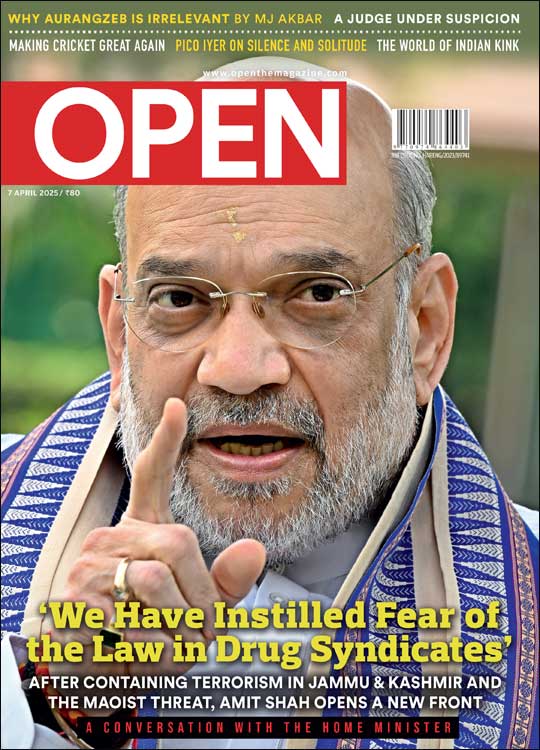
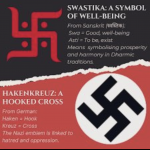
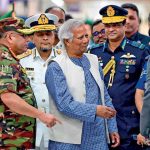
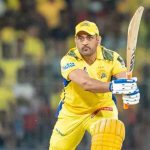
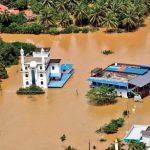
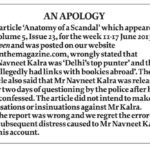


More Columns
Elon Musk attracts sharp attack over ‘swastika’ from Indians on social media Ullekh NP
Yunus and the case of a "land locked" imagination Siddharth Singh
Why CSK Fans Are Angry With ‘Thala’ Dhoni Short Post